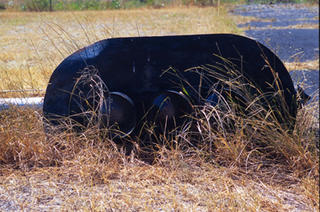Cold Shivers

I guess somebody once looked at The Milwaukee's Pacific Extension and thought it looked more like a branch line than a real transcontinental route. I suppose that's understandable since for many of its later years weeds and derailments seemed to define the old line. What is remarkable is that the railroad functioned at all in its final years as money and locomotives were pulled away from the Western Extension to be used elsewhere on the sinking system.
Because the route's path to the West Coast avoided many of the population centers that exist in Montana and Washington, The Milwaukee set up shop in small towns from where it ran much of its business. Othello, WA was a Milwaukee sponsored railroad town that was a center of activity when trains switched out electric locomotives as they traveled east or put them back on the point as they moved west to Seattle. Similarly, Avery, ID was a mountain railroading town buried deep in the valleys of The Bitterroot Mountains whose only points of access were via the railroad itself or a winding and narrow 2-lane that paralleled it down the opposite shore of the St. Marries River. Still, it was a center of activity for The Milwaukee with yards and engine house that kept the Little Joes and Box-cab electrics turned and heading east back over the mountains to Harlowton, MT.
At Harlowton, the story is the same. A small town on the plains of Montana, north of the major population centers of Bozeman and Livingston, but an important town for The Milwaukee. Electric engines were added or removed here, the yards were of decent size, and the station was a large wooden structure that seemed to boast about the importance of the railroad. The Milwaukee was also the major employer in towns like Harlowton and the devastation that bankruptcy had on the local economies of these towns isn't hard to see. Houses are vacant and for sale, downtown businesses are gone, old gas stations are boarded up, and there is a quiet and somber feel that surrounds the town. Like the railroad itself, the towns and people that it left behind are very silent. In a park nearby the old mainline the wind blows through the tall trees kicking up dust in the warm afternoon sun and though it is a warm summer's day, the quiet of all but the trees in the wind sends shivers down the spine.
Lying in the weeds in the Harlowton yards is an old signal that was moved in for part of a static display honoring the people that defined the railroad and the old station that still stands there. Its vacant expression is like everything else the railroad left behind it: very very quiet.



Comments